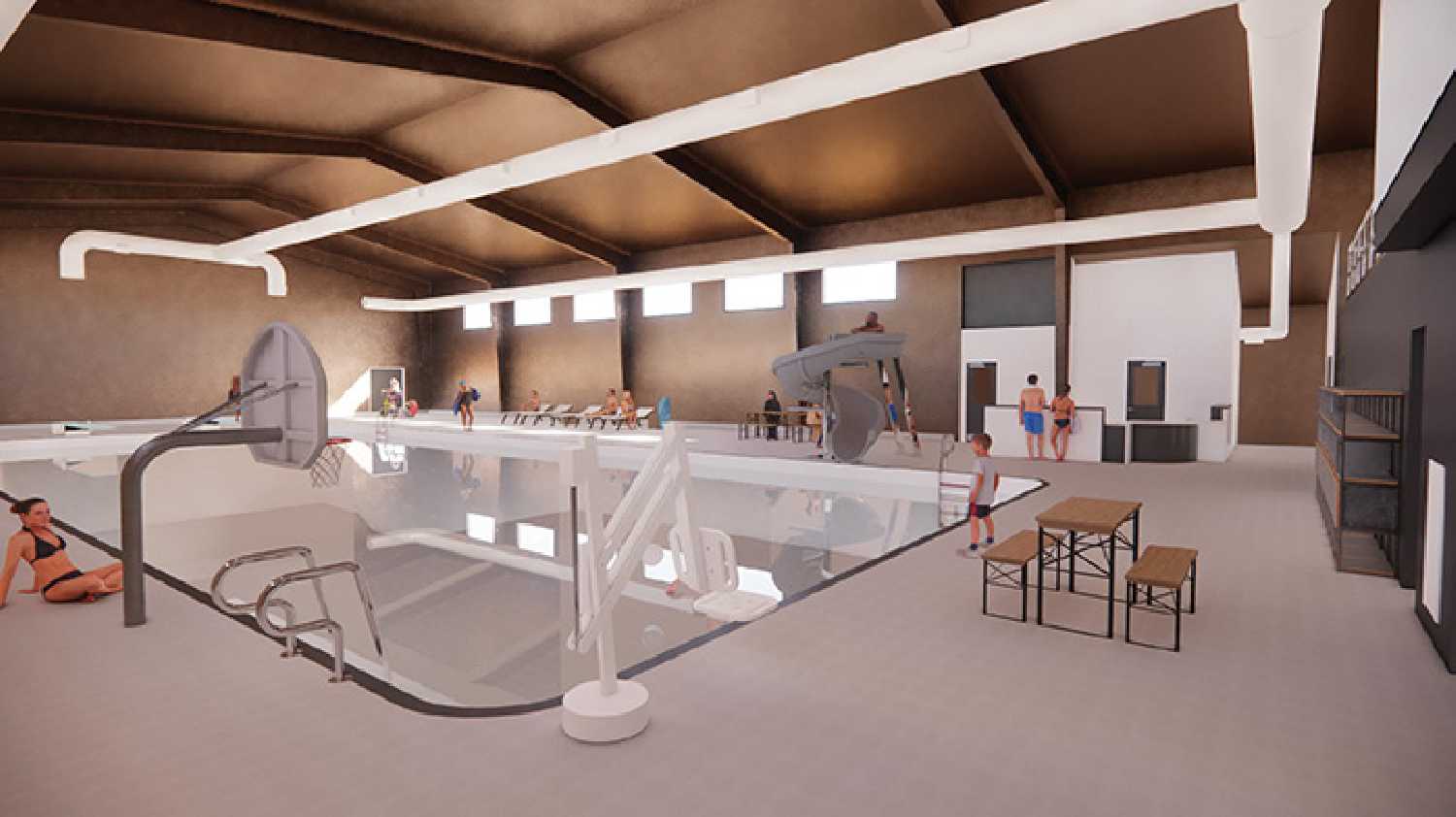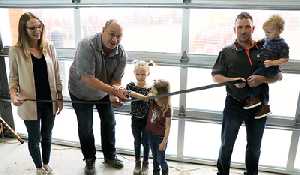Rocanville Pool to reopen in 2025
Contract signed with Copper Ridge Construction
March 5, 2024, 11:25 am
Kara Kinna


The Rocanville pool project took a giant leap forward on Friday after the town signed a contract with Copper Ridge Construction in Wapella to act as general contractor for the project.
Plans are for construction to start next week, with the project to be completed by the end of 2024 and the pool being operational for the 2025 swim season. After putting out a call for RFPs, the town made the decision to switch from a steel building to a wooden building, with the project budgeted at $4 million.
“We have chosen a contractor. We’re working with our engineering group and they still have some work to do to get finalized drawings on a wood building because we made that switch, but for all intents and purposes, I believe work will be starting as early as next week on the inside trench—the piping trench around the pool,” said Rocanville Mayor Ron Reed last Friday.
“They’re going to do a fair chunk of that before demolition just to get it out of the way.
“So everything is a go, and looking at schedules, we should be done by the end of the year and within the town’s budget.
“Copper Ridge Construction out of Wapella is our contractor, and we’re looking at right around the $4 million mark for overall cost. They are the general contractor and the big thing is that the Pool Committee is going to have a lot of say in the subtrades and doing a bunch of that work just to help save costs overall. For any kind of contractor, time is money, so if we can reduce that time spent for them it should reduce the overall costs of the project.
“We’re going to work on finding those subtrades right away and then work that into the schedule of the general contractor. With the type of building that we’re doing, things like electrical are all going to be service mount conduits so it’s not like the electrician has to be there during construction. But any synergies we can find with that time-wise and schedule, with the subtrades and the general contractor, obviously we’re going to take advantage of.”
Reed says little has changed from the original project plan other than switching to a wooden building.
“It’s basically the same but we went a little bit bigger. The building is going to be a little bit bigger just to avoid the old concrete foundation so we don’t have to completely remove all of that concrete because we’re going to be outside that old footprint of the building. So we’re going to kind of get it down to grade level but start from scratch outside of the original building.”
How much of a difference did choosing a wooden building make?
“It was a little bit cheaper but the big thing for us was the time frame,” says Reed. “In order to secure a steel package we would have had to have a manufacturer start on that probably a month and a half ago to have it here in time to meet our schedules for construction. But with wood being more readily available, we had some time to finalize some finer details. And then talking with a couple of other business owners in town that have gone with steel buildings in the past, versus a wood building in a similar high moisture area, we felt a wood building is actually a superior option.
“Some of the finer details that we’ve ironed out is that it’s going to be very moisture proof—small things like cement board versus drywall just to avoid that moisture being able to penetrate into the drywall. It won’t do that to the cement board.”
Reed says the pool committee more or less knows what to expect in terms of costs for some of the subtrades that will be involved in the project due to quotes that came in during the RFP process.
“We got a fair amount of quotes with this last proposal that we put on SaskTenders with some of the major subtrades—the HVAC portion and the electrical portion. That interior finishing is probably going to be the big part that’s kind of unknown,” he says.
As for the impact on taxpayers, Reed is hoping there won’t be much impact at all.
“The overall project and the overall borrow that the town is going to be looking at is probably, as far as we can tell, around the $2 million mark. But as we said kind of from the beginning of this project, we’re looking into 2025 for a rather substantial increase to our potash tax sharing. So with initial construction this year and grant finalization having to be done by the end of year, we’re really feeling that there’s going to be no impact to taxpayers.
“(The expected increase in) potash tax sharing will cover loan payments and we have had a fair amount of donations that have already come in that will give us a good start to make up that difference as well.
“We’re somewhat bound by that referendum as well. People knew what the implications might have been with that $700 tax increase over three years and we had good support even with that being a potential.”



































